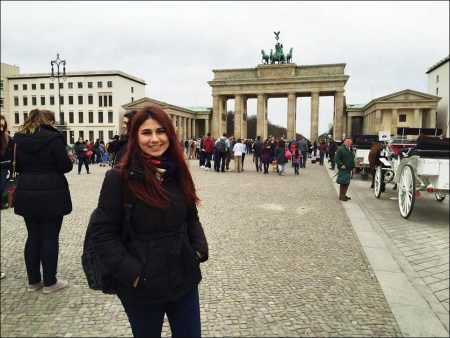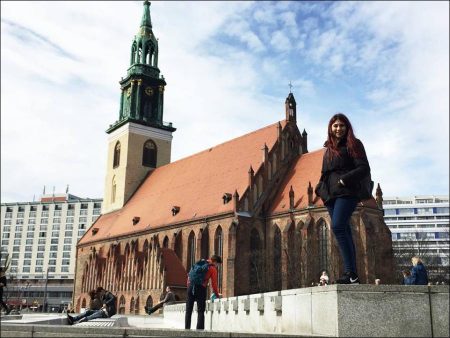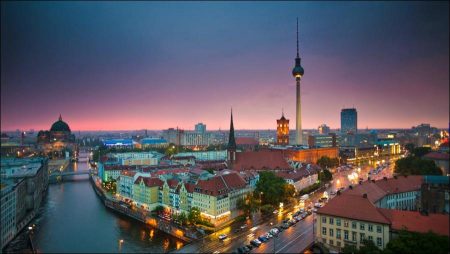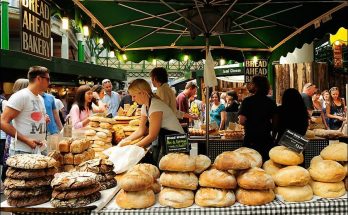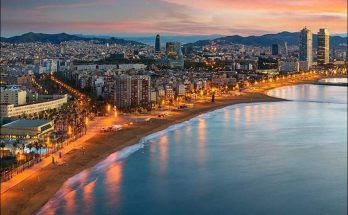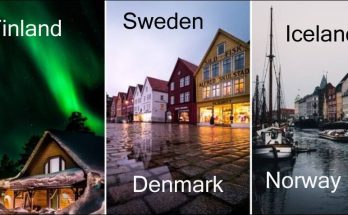Berlin is the capital of Germany and one of its 16 states. With a population of approximately 3.5 million people, Berlin is the second most populous city proper and the seventh most populous urban area in the European Union. Located in northeastern Germany on the banks of Rivers Spree and Havel, it is the centre of the Berlin-Brandenburg Metropolitan Region, which has about six million residents from over 180 nations. Due to its location in the European Plain, Berlin is influenced by a temperate seasonal climate. Around one-third of the city’s area is composed of forests, parks, gardens, rivers and lakes.
First documented in the 13th century and situated at the crossing of two important historic trade routes, Berlin became the capital of the Margraviate of Brandenburg (1417–1701), the Kingdom of Prussia (1701–1918), the German Empire (1871–1918), the Weimar Republic (1919–1933) and the Third Reich (1933–1945). Berlin in the 1920s was the third largest municipality in the world. After World War II, the city was divided; East Berlin became the capital of East Germany while West Berlin became a de facto West German exclave, surrounded by the Berlin Wall (1961–1989) and East Germany territory.[14] Following German reunification in 1990, Berlin was once again designated as the capital of united Germany.
Berlin is a world city of culture, politics, media and science. Its economy is based on high-tech firms and the service sector, encompassing a diverse range of creative industries, research facilities, media corporations and convention venues. Berlin serves as a continental hub for air and rail traffic and has a highly complex public transportation network. The metropolis is a popular tourist destination. Significant industries also include IT, pharmaceuticals, biomedical engineering, clean tech, biotechnology, construction and electronics.
jh4>Spend a day on Museum Island
At the eastern end of Unter den Linden is Museum Island, a UNESCO-listed World Heritage Site lying in the middle of the Spree. It’s home to five of Berlin’s most important museums: two not to be missed are the Neues Museum, home to the Egyptian bust of Nefertiti and the spectacular Pergamonmuseum, one of the world’s major archaeological museums.
Within it you walk through a series of astounding structures, from a partial recreation of the Pergamon Altar (170–159 BC) to the two-storey Roman Gate of Miletus (29 metres wide and almost 17 metres high) and the Ishtar Gate of Babylon, dating from the reign of King Nebuchadnezzar (605–563 BC). Tucked away upstairs is the Islamic Art collection, a treasure trove. A day ticket is available permitting entrance to each museum.
Ascend to an iconic vantage point
Largely owing to World War II, Berlin’s architecture has a fascinating range, from the historical to high modernism and more controversial postmodern projects. A visit to the Reichstag, the home of the German Parliament, provides the perfect overview. Opened in 1894, its renovation was masterminded by British super-architect Norman Foster and completed in 1999. The roof is an entirely glass structure, allowing for a panoramic view of the city right from the centre of government.
Entrance to the roof is free but you must register in advance; once you’re in make this a totally informative experience by plugging into the audio tour and heading to the open roof for an overview of the sites all around. Alternative views can be found by taking Europe’s fastest elevator to the Panoramapunkt on the 24th and 25th floors of the Kollhoff Tower in Potsdamer Platz.
Over in the east of the city is Fernsehturm, rising over 200 metres above Alexanderplatz. The iconic tower is Europe’s fourth tallest free-standing structure and the stainless steel sphere contains a revolving restaurant and viewing gallery. On clear days visibility can reach 40 kilometres.
Indulge in some DDR ‘Ostalgia’
Soviet occupation of East Berlin ended in 1990, and today the DDR Museum offers a snapshot of life in the old days. The interactive museum allows visitors a truly hands on experience for both children and adults alike: root through drawers of East German memorabilia, mimic a Stasi officer and listen in on a bugged flat. Out on the streets you can take a unique tour of the city by renting a Trabant, the classic car produced in former East Germany, now painted in bright colours by the Trabi Safari company.
Explore Berlin’s Jewish history
The Jüdisches Museum presents the story of Berlin’s Jewish population through the Museum’s own architecture. The newest and most eye-grabbing section of the building was designed by controversial Jewish architect Daniel Libeskind. Its shape is based on an exploding Star of David, with its interior spaces disappearing into angles, so the museum experience is more about the effects of the space than the documents and artifacts.
Across Oranienburger Straße is the Neue Synagogue: built in the late 19th century this building survived World War II, and its golden dome stands out from afar. For more of an emotional way into history, walk night or day through the Denkmal für die Ermordeten Juden Europas – also known as the Holocaust Memorial. This memorial to the murdered Jews of Europe takes the form of 2,711 blocks of varying heights arranged across the area of a housing block.
Walk the Berlin Wall
The Wall was mostly demolished between June and November 1990 although a restored stretch remains along the southern border of Wedding and Mitte. Visit Checkpoint Charlie, the famous east-west border control during the Cold War and now a tourist centre, for comprehensive display boards telling the Wall’s story. For more of a visual history, take a walk along the Wall by the Spree, where it runs between the Freidrichshain-Kreuzberg districts.
Whereas graffiti has been removed from the northern section of the Wall, the one-mile stretch known as the East Side Gallery is dedicated to art and preserves the paintings made on the eastern side when the Wall was brought down. Although attempting to preserve the spirit of the time, an argument blew up when the restoration project of recent years was seen to overstep the mark, with original artworks being painted over without the artists’ permission.
Visits: 141
